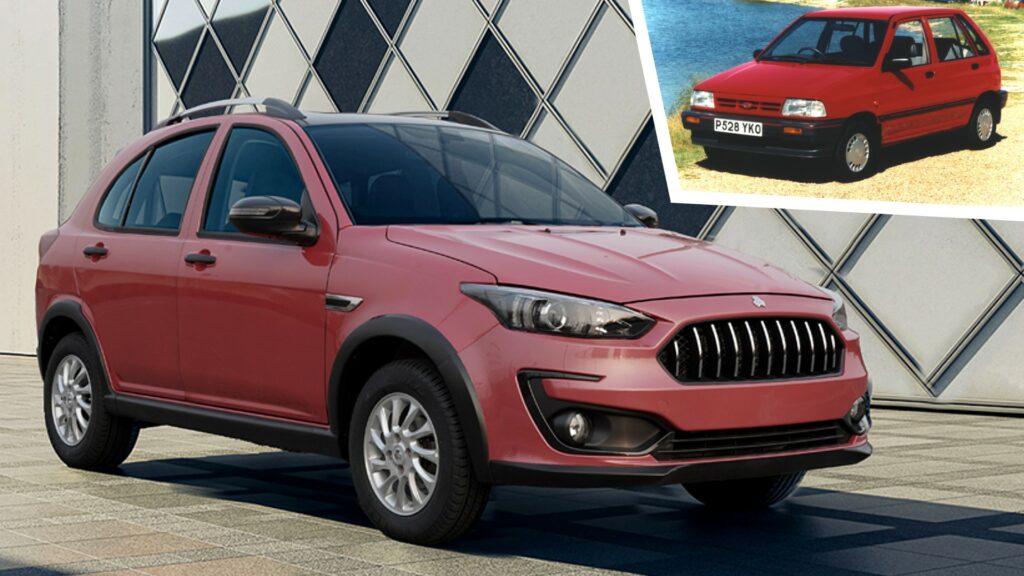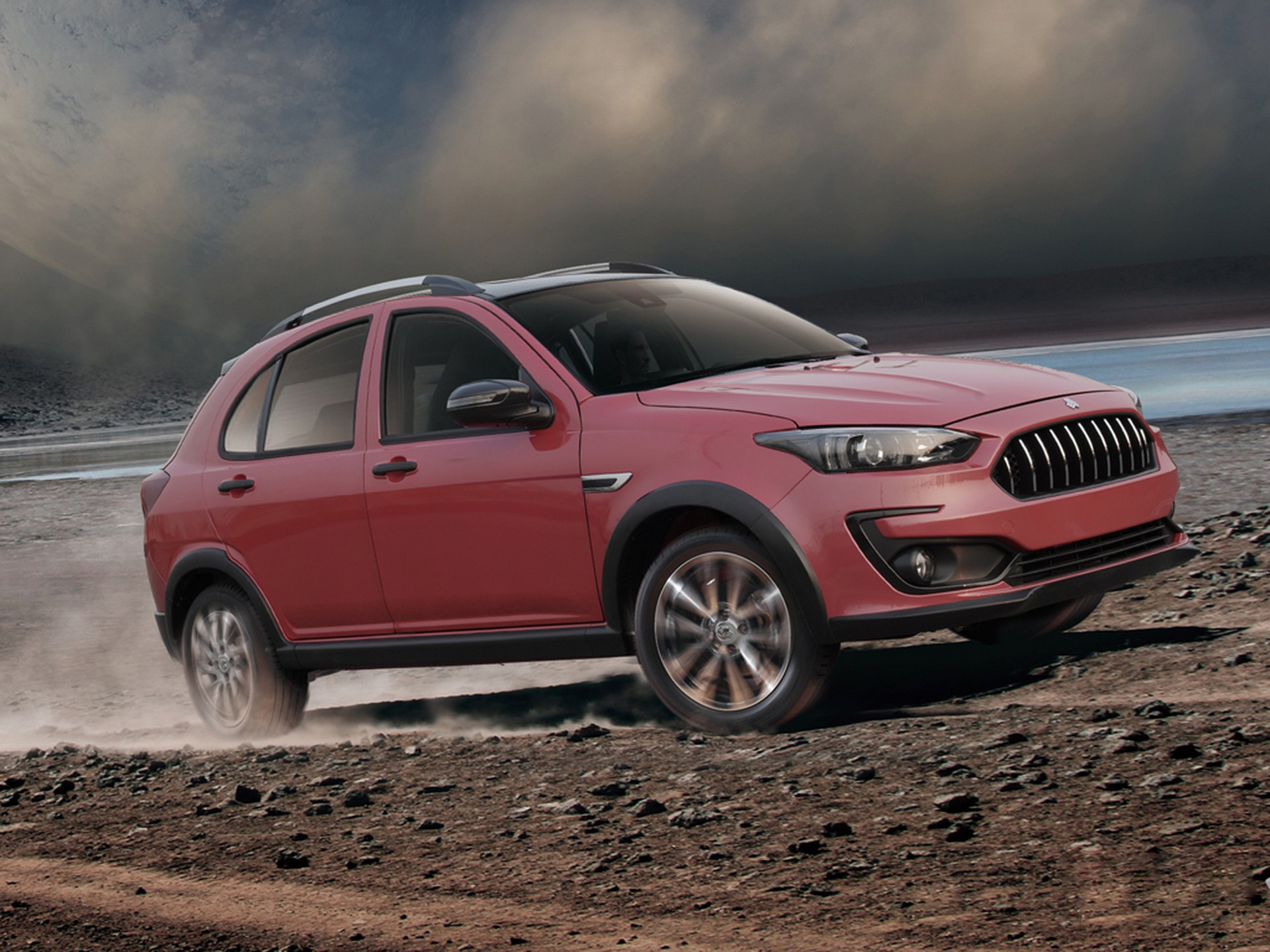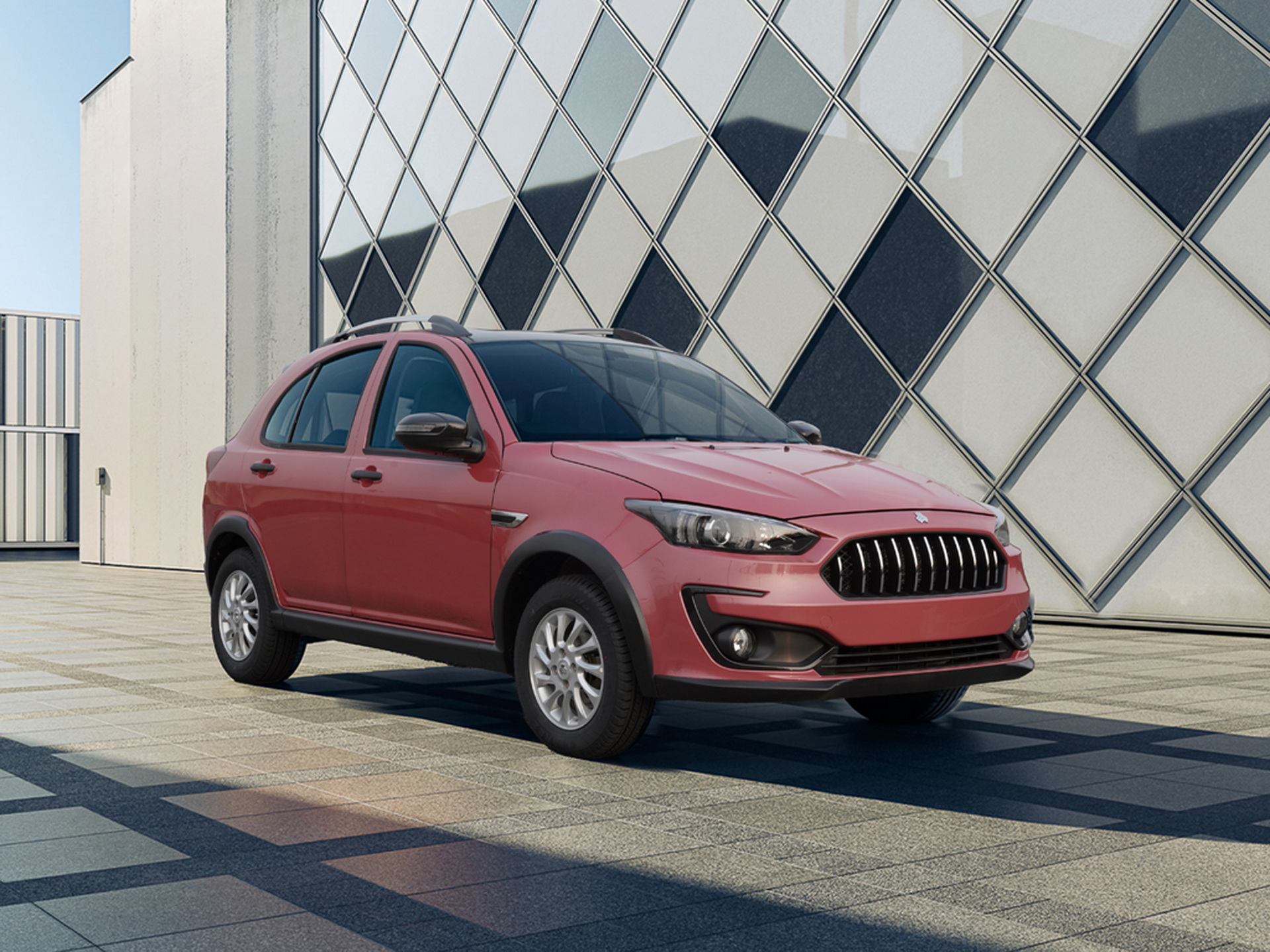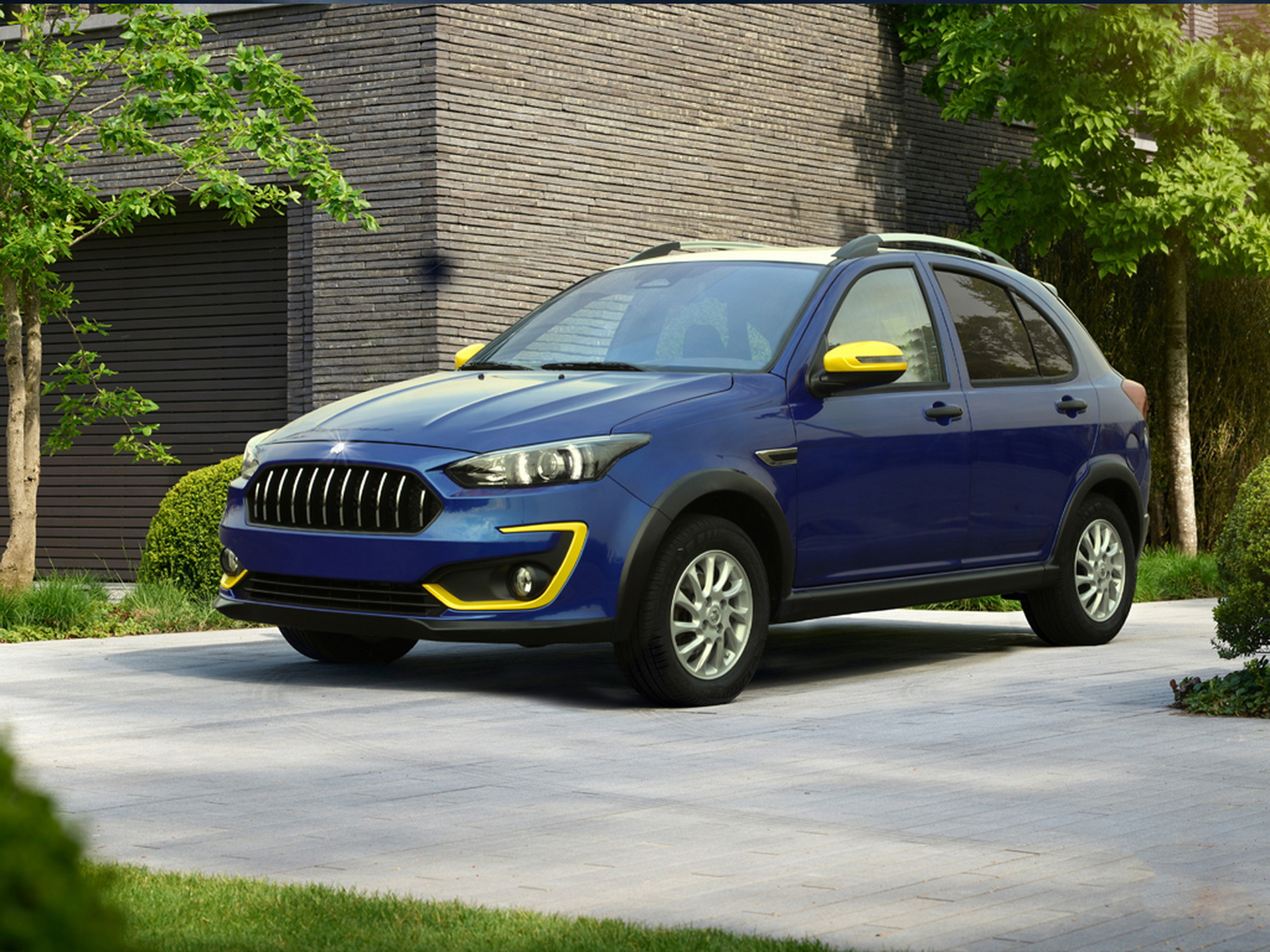Saipa, the largest automaker in Iran known for producing licensed products, launched a new model featuring a crossover supermini bodystyle. The Saipa Atlas is an improved version of the Saiba Quick, although its underpinnings date back to the old Kia Pride from 1986.
The Atlas is a facelift of the Quick which is why their profile looks nearly identical. However, it sports a completely different face featuring aggressive LED headlights, a Ford-style grille with vertical slits, additional dynamic lines on the bonnet, and more complex bumper intakes. The rear has also been refreshed with a modern pair of taillights, a cleaner tailgate design, and a new rear bumper.
Read: Iranian Carmaker To Restart Old Dacia Logan Production Without Renault’s Involvement

The Saipa Atlas (above) compared to its predecessor – the Saipa Quick (below). Notice the similarities in the profile, and the heavily reworked front and rear ends.
Saipa is proud of the color palette of the Atlas, which is offered in different combinations with colorful accents on the mirrors and bumpers. While the aforementioned updates are welcome, the tiny 14-inch wheels under the plastic fenders give away the aging underpinnings of the vehicle. The dimensions were not announced, but the Atlas’s footrpint is likely very similar to the outgoing Quick which measures 3,989 mm (157 inches) long.
The company hasn’t shared any photos of the interior but they did confirm a 7-inch screen for the infotainment system – probably the same as in the Quick – combined with an updated audio system. Other equipment highlights include automatic LED headlights, auto wipers, optional electric seats, heated mirrors, sunroof, ESC, and – surprisingly – a blind spot detection system. Insulation has been improved compared to the Quick, with less engine noise getting through the cabin.
Speaking of the powertrain, the Atlas is expected to use a slightly updated version of the naturally-aspirated 1.5-liter four-cylinder petrol engine. The same motor is already fitted in plenty of Saipa models producing 87 hp (65 kW / 88 PS) and 128 Nm (94 lb-ft) of torque. In the Atlas, the engine will be mated either to a manual gearbox, or to a CVT automatic, sending power to the front axle.
Ancient Underpinnings
And now let’s address the elephant in the room. The Saipa Atlas is based on the X200 architecture which is an improved version of the platform introduced by the Kia Pride / Ford Festiva / Mazda 121 triplets dating back to 1986. The automaker, which is majority owned by the Iranian state, produced several models based on the Kia Pride, with their styling gradually differentiated from their old relatives. Besides the Quick and the Atlas crossovers, other Pride-based Saipa models that are currently offered on sale include the Tiba (hatchback and sedan), the Saina (sedan), and the 151 (pickup).
We don’t know how much work Saipa engineers have put into the immortal platform but it is unlikely that the aforementioned models offer a level of safety, comfort, and driving dynamics that is comparable to modern offerings in the urban car and sub-compact segments. The automotive landscape has drastically changed since the ’80s so such an old platform is hard to justify. It does however allow Saipa models to be quite affordable, which is a key feature for the Iranian market.
The Saipa Atlas will be launched in Iran sometime in 2023, gradually replacing the Quick in the production line of the local factory. Those who want something more modern in terms of underpinnings, can opt for the Saipa Sahin (sedan) and the Saipa Aria (crossover) which are based on the second-gen Toyota Yaris.

















